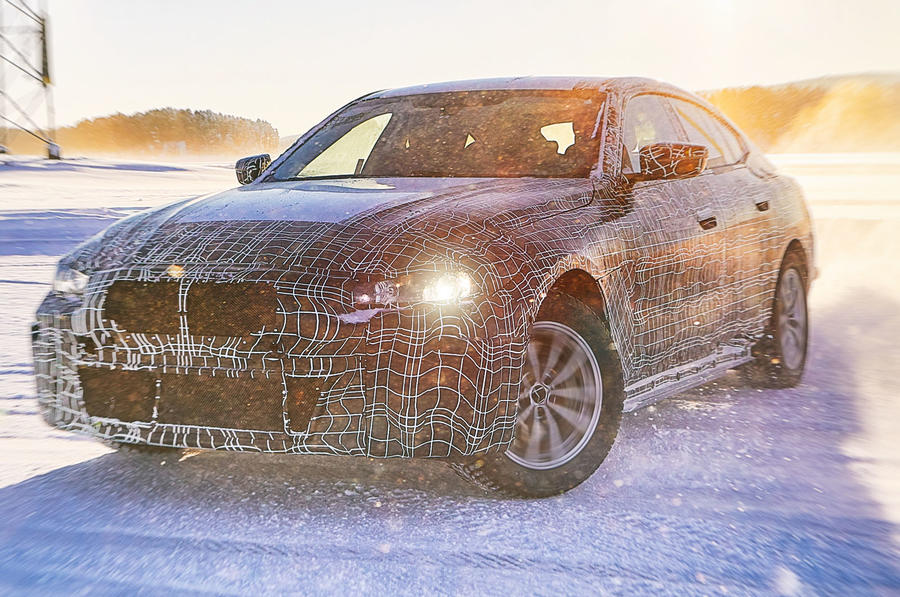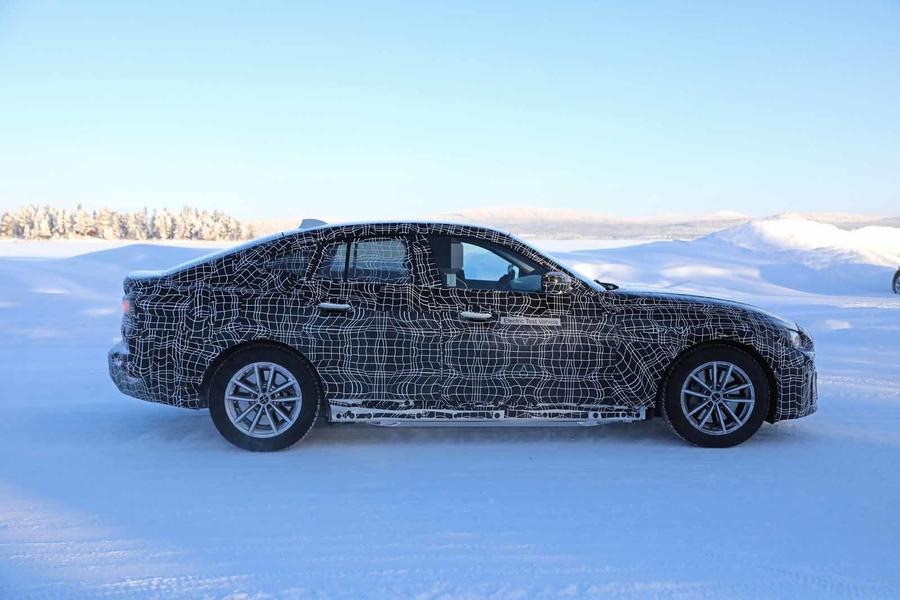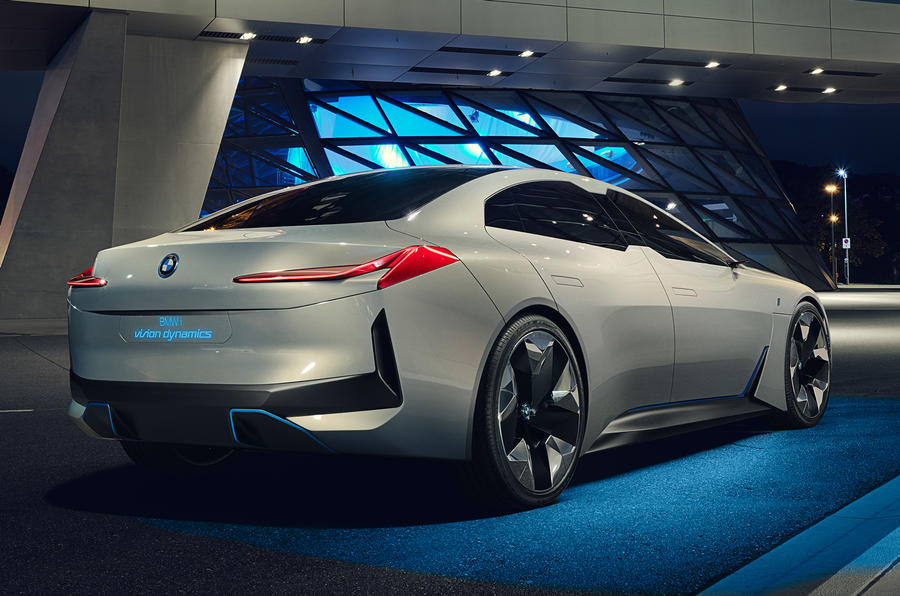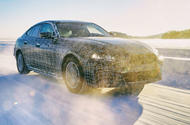The i4 will take on the Tesla Model 3 when it arrives in 2021
Electric 4 Series-based saloon has joined the upcoming iX3 and iNext SUVs at BMW’s cold weather testing facilit
Images released by BMW show the firm’s new i4 electric saloon carrying out cold weather testing alongside the upcoming iNext and iX3 electric SUVs.
The iX3, based on the latest X3, will arrive in 2020, followed a year later by the standalone iNext and 4 Series-based i4 a year later.
BMW said the tests taking place at its cold weather testing facility in Arjeplog, Sweden aim to determine the durability of the models’ batteries, electric motors and suspension systems.

The Tesla Model 3-rivalling i4 is claimed to have a range of over 373 miles, a 0-62mph time of 4.0sec and a top speed of more than 124mph.
As in previous prototype shots, a clear visual link between the i4 and the latest 3 Series can be seen. The i4 will share much of its design with the upcoming second-generation 4 Series.
However, a side-on view reveals that the new car appears higher off the ground (both in terms of roof height and ground clearance) than today’s 4 Series, suggesting a raised floor to accommodate a sizeable long-range battery. Other tell-tale signs that this is the i4 include a blanked-off front grille, fake ‘exhausts’ in the disguise and legally mandated ‘electric test vehicle’ stickers.

The i4 is scheduled to be built on the same line as standard 3 Series models at BMW’s factory in Munich, Germany. To ensure a smooth production process with existing petrol, diesel and hybrid models, the manufacturer is already running assembly tests with pre-production versions.
The expansion of the i sub-brand follows a ruling by the EU to enforce a fleet average CO2 emission reduction of 35% by 2030. The ruling effectively spells an end to the combustion engine as a sole source of propulsion for high-volume cars sold in Europe by the end of the next decade.
This was expected by BMW’s top management, who initiated an acceleration in the development of both long-range plug-in hybrids and electric models in a board meeting held earlier this year. Speaking to Autocar at the 2018 Paris motor show, chairman Harald Krüger confirmed the altered i division plan, which aims to enable BMW to offer more electric cars than any rival premium brand in the short term.
It calls for the introduction of up to five dedicated i models by the end of 2021, with tentative steps to expand to 12 electric models within the whole BMW Group, including Mini and Rolls-Royce, by 2025.
Krüger has also given the green light for 25 new plug-in hybrid models to be introduced by 2025 in order to meet the 2030 target.

Among the models at the centre of BMW’s electrification strategy is a further developed version of the continuously evolving i3, the Mini SE, the iX3 and the i4. BMW will follow that with a more advanced range of premium electric cars employing solid-state batteries and autonomous driving features, previewed on the recent iNext concept car.
Talking about the i4, Krüger said: “The leading factors that will set it apart are fantastic design, which is very different to anything else on the road, and the fact that it is lighter and therefore more dynamic than anything we see on the market today, thanks to the materials we will use. Couple that with the connectivity technology we are constantly developing and we are confident it will lead the market.”
Sources suggest BMW is considering two drivetrain options for the i4. The first uses a front-mounted electric motor in combination with a fixed-ratio gearbox and an electric propeller shaft to channel drive to the rear wheels. This layout would give the i4 traditional BMW traits and, according to one source, the best possible weight distribution.
The second, and more costly, option is to use two electric motors: one driving the front wheels and a second within the rear axle assembly driving the rear wheels.

Similar to the system that’s set to appear on the iX3, it offers the choice between front and four-wheel drive, depending on the drive mode that is selected. To achieve performance targets similar to those of the current 335d, BMW is banking on a total output for the electric motor set-up of the i4, whether as a single unit or dual units front and rear, of approximately 350bhp.
BMW’s electric revolution begins in the sales charts
BMW’s sales of electrified models have increased rapidly in the past two years. In January 2017, it registered 5232 plug-in vehicles globally, but that figure had more than doubled to 13,271 by December. The company registered on average more than 10,000 electrified models per month in 2018.
These registrations are more significant viewed as a percentage of BMW’s total sales figures. In January 2017, this was an unremarkable 3.2%, but in August 2018, it was 6.7%. Surprisingly, the most popular plug-in BMW Group model in 2017 was the i3 – a car that has been in showrooms since 2013 and failed to meet targets for many of its years on sale.
A total of 31,482 were registered in 2017, nearly double the number in 2014. Despite this, BMW still has a long way to go to achieve its 2020 target of 500,000 electrified vehicles sold annually.
Read more
Source: Autocar
